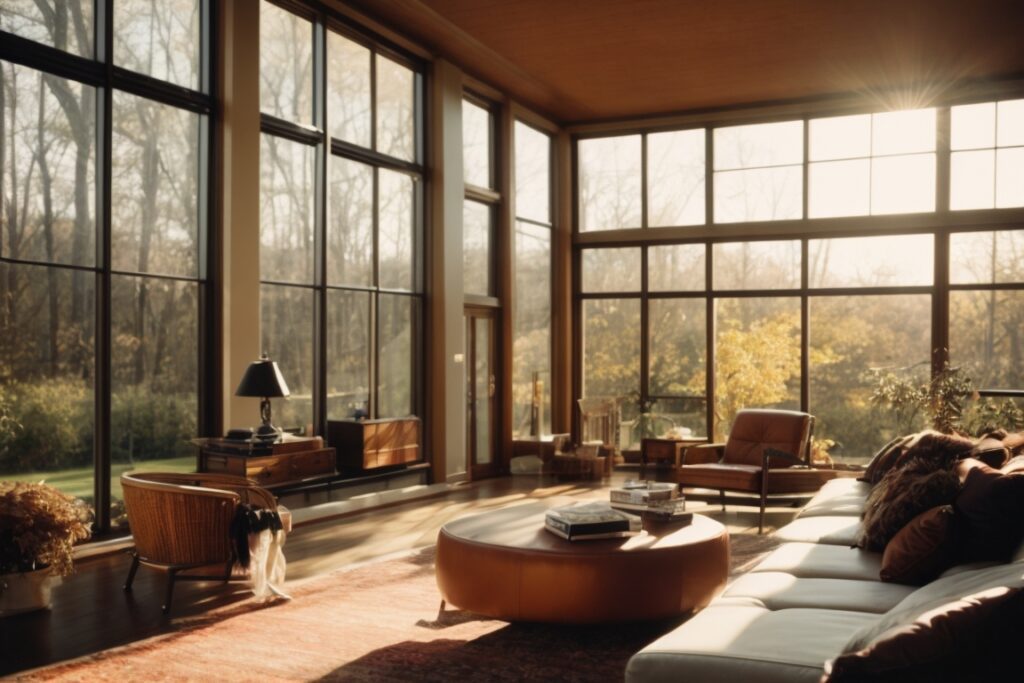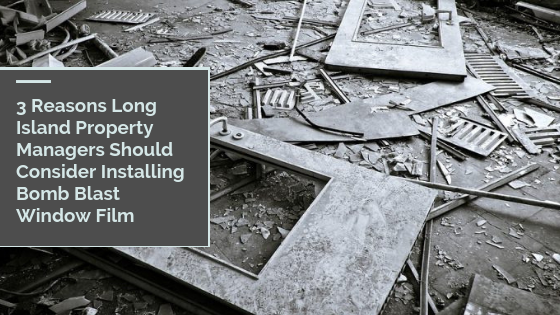As the crisp winter air settles over Long Island, homeowners and businesses alike seek innovative solutions to combat the seasonal chill while optimizing energy efficiency. In the quest for a cozy interior without sacrificing the benefits of natural light, Low-E window film emerges as a compelling ally. In this exploration, we delve into the transformative science behind Low-E technology and its application, unlocking a pathway to enhanced insulation, energy savings, and year-round comfort. Join us on a journey to understand why Low-E window film stands as a promising solution to make Long Island winters a season of warmth and efficiency.
The Science of Low-E Window Film & How It Works
Before we go any further, it may be helpful to know how low-e window film works and the exact science behind this technology. Low-emissivity (low-e) window film operates on principles rooted in the science of heat transfer and the electromagnetic spectrum. Its functionality revolves around managing infrared radiation from the sun, with a focus on maintaining interior temperatures and enhancing energy efficiency.
The Electromagnetic Spectrum
Sunlight comprises a spectrum of electromagnetic radiation, encompassing visible light, ultraviolet (UV) radiation, and infrared (IR) radiation. In particular, the sun emits a notable amount of energy in the form of infrared radiation, which contributes to the sensation of warmth.
Heat Transfer Mechanisms
Heat transfer occurs through conduction, convection, and radiation. In the context of windows, the focus is on radiant heat transfer, primarily in the form of infrared radiation.
Low-E Coating
Integral to low-e window film is a transparent coating characterized by low emissivity. Emissivity denotes a material’s capacity to emit infrared radiation, and low-e materials excel in minimizing such emissions.
Infrared Reflection
The low-e coating on window film serves the purpose of reflecting a substantial portion of incoming infrared radiation while permitting the passage of visible light. This design is instrumental in reducing heat loss to the external environment, fostering a warmer interior during colder seasons.
Dual-Action Capability
An inherent feature of low-e window film is its dual-action functionality. It acts as a barrier against heat loss in winter by reflecting infrared radiation back into the interior. Simultaneously, during warmer periods, it reflects solar heat away from the interior, contributing to a more temperate indoor environment.
UV Protection
In addition to regulating infrared radiation, certain low-e films offer UV protection by blocking a portion of the sun’s harmful ultraviolet rays. This dual-purpose feature not only enhances energy efficiency but also safeguards interior furnishings from damage and fading.
Temperature Control Year Round
In essence, low-e window film functions by strategically managing the transmission and reflection of infrared radiation. This targeted control facilitates a balance in interior temperatures, rendering spaces more comfortable and energy-efficient throughout the year.
Using Low-E Film to Improve Winter Comfort in Long Island
Low-emissivity (low-e) window film can be a good option for Long Island winters, as it helps improve the energy efficiency of windows by reducing heat transfer. Low-e films are designed to reflect and emit radiant energy, which can help keep the interior of a building warmer in the winter and cooler in the summer.
Here are some potential benefits of low-e window film for winters in Long Island:
- Improved Insulation: Low-e films can enhance the insulation properties of windows, reducing heat loss and helping to maintain a more comfortable indoor temperature during the colder months.
- Energy Savings: By reducing the need for heating, low-e window films can contribute to energy savings and lower utility bills.
- UV Protection: Many low-e films also provide UV protection, which can help prevent the fading of furniture, flooring, and other interior items caused by prolonged exposure to sunlight.
- Glare Reduction: Some low-e films are designed to reduce glare, improving visibility and comfort without sacrificing natural light.
Important Factors to Consider
Before installing low-e window film, it’s essential to consider factors such as the type of windows you have, the climate conditions in Long Island, and your energy efficiency goals. Consulting with a professional or doing thorough research on the specific product and its compatibility with your windows can help you make an informed decision. Additionally, some utility companies or government programs may offer incentives for energy-efficient home improvements, so it’s worth exploring such options.
Elevate Comfort & Save Energy This Winter
Combat the Long Island winter chill with Low-E window film. Experience enhanced insulation, lower energy bills, and year-round comfort. Act now to shield your space from the cold, optimize energy efficiency, and preserve your interior assets. Contact our team today! Don’t let winter dictate your indoor experience. Embrace warmth, seize savings, and transform your Long Island property into an energy-efficient haven. Act now – your comfort awaits!





About The Author: Angus Faith
Angus Faith is a window film installer working in the Long Island area. After moving to Long Island from Scotland, Angus obtained a job in the construction industry and became interested in sustainable architecture. This led him to discover the benefits of window film and its usefulness for increasing energy efficiency. Today, he is considered one of the top window film experts in the area. Using his ten years of experience in diagnosing architectural concerns and knowledge of window tinting innovations, Angus helps his customers find the right film to accomplish their home or business goals. In his spare time, Angus enjoys sailing, traveling, and spending time in the park with his two Golden Retrievers, Alastair and Clyde.
More posts by Angus Faith